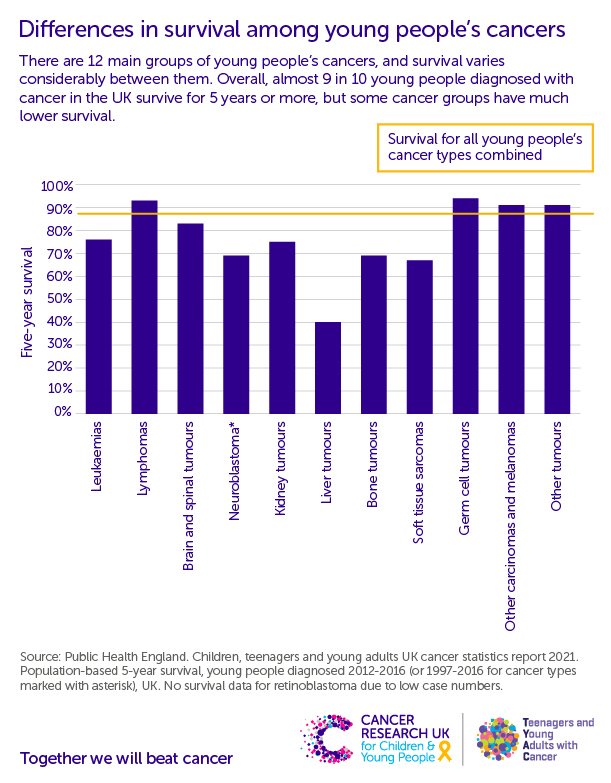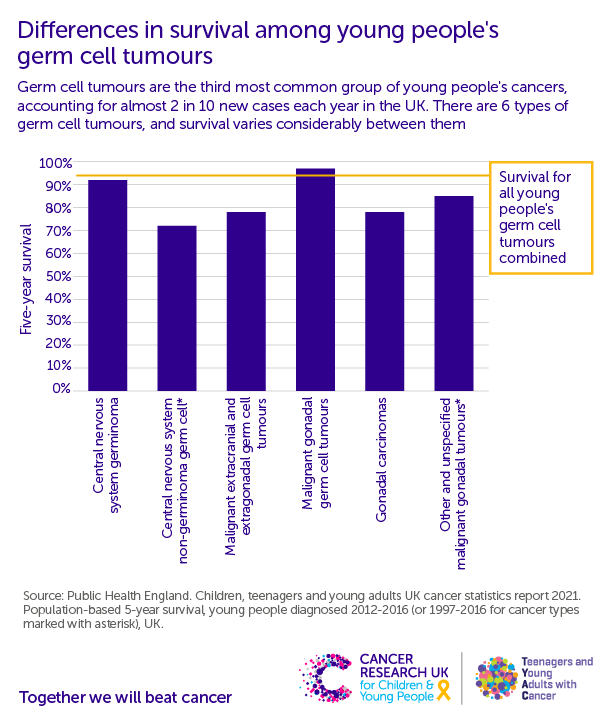87% of people diagnosed with cancer at ages 15-24 in the UK are predicted to survive for at least five years, as shown by population-based survival for patients diagnosed in 2012-2016.[1] This falls to 83% surviving for at least 10 years, for people diagnosed in 2007-2011.
Survival among people diagnosed with cancer at ages 15-24 continues to fall beyond ten years after diagnosis. 79% of people diagnosed in 2002-2006 survived for 15 years or more, and 74% of those diagnosed in 1997-2001 survived for at least 20 years.[1]
Young People’s Cancers, Five-, Ten-, Fifteen-, and Twenty-Year Population-Based Survival, Ages 15-24, UK, 1997-2016

References
- National Cancer Registration and Analysis Service. Children, teenagers and young adults UK cancer statistics report 2021. Available from http://ncin.org.uk/cancer_type_and_topic_specific_work/cancer_type_specific_work/cancer_in_children_teenagers_and_young_adults/. Accessed April 2021.
About this data
Data is for UK, 1997-2016, International Classification of Childhood Cancer, Third Edition (ICCC-3).
Survival statistics give an overall picture of survival and the survival time experienced by an individual patient may be much higher or lower, depending on specific patient and tumour characteristics.






